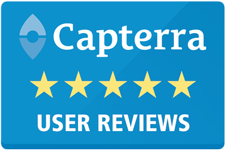The pros and cons of all-in-one fitness management systems

Running a successful gym, studio, or martial arts school takes more than great workouts — it takes the right tools to keep your business organized and your members happy. That’s where all-in-one fitness management software comes in.
By combining scheduling, billing, member tracking, and marketing into one platform, it promises to save you time and simplify your operations. But is it really the right solution for your business?
Let’s break down the biggest advantages and potential drawbacks so you can make an informed decision.
What all-in-one fitness management software actually means
When you run a gym, studio, or martial arts school, you need tools for member sign-ups, scheduling, billing, marketing, and tracking progress. All-in-one fitness management software combines these into a single system so you can manage everything from one place.
The goal? Less time on admin, more time growing your business and serving members. But before you jump in, it’s worth weighing the benefits and potential downsides.
The main advantages of all-in-one fitness management systems
They save time and cut down on busywork
Switching between multiple apps for scheduling, payments, and CRM eats up hours each week. With one platform, everything is in sync — reducing duplicate work and freeing up time for coaching or member engagement.
They give members a better experience
From booking classes to paying online to tracking workouts, a unified system makes it easy for members to interact with your business. A smoother experience can lead to happier members and better retention.
They make your data more useful
With all your information in one place, you can see the full picture — from attendance trends to overdue payments. This helps you make smarter business decisions faster.
They can save money in the long run
Paying for one complete system can cost less than paying for multiple specialized tools. You also cut down on integration headaches and extra support costs.
The potential downsides of all-in-one fitness management systems
Some features may feel less specialized
Because the platform covers many functions, certain features may not be as advanced as those in a dedicated, single-focus tool.
They may cost more upfront
All-in-one solutions often require a larger initial investment compared to smaller, standalone apps. For growing studios, that’s something to budget for.
Switching systems can be harder later
Once all your data and processes are tied to one platform, changing providers takes more planning and effort.
Onboarding can take longer
Training staff on a robust system takes time. During the learning phase, you may notice a temporary dip in efficiency.
How to decide if an all-in-one solution is right for you
Ask yourself:
- Are you spending too much time switching between tools?
- Is your member experience fragmented across different platforms?
- Do you want better reporting and insights from your business data?
If you answered “yes” to most of these, an all-in-one fitness management software could be the right move. But if you rely heavily on highly specialized tools, you might prefer a hybrid approach.
Final thoughts
An all-in-one system can be a game-changer for streamlining operations and improving your member experience. The key is to choose a platform that fits your unique business needs — not just the one with the longest feature list.
Ready to see how an all-in-one platform can help you manage your fitness business more efficiently? Book a demo with Zen Planner today and discover how to save time, boost member satisfaction, and grow your revenue.






